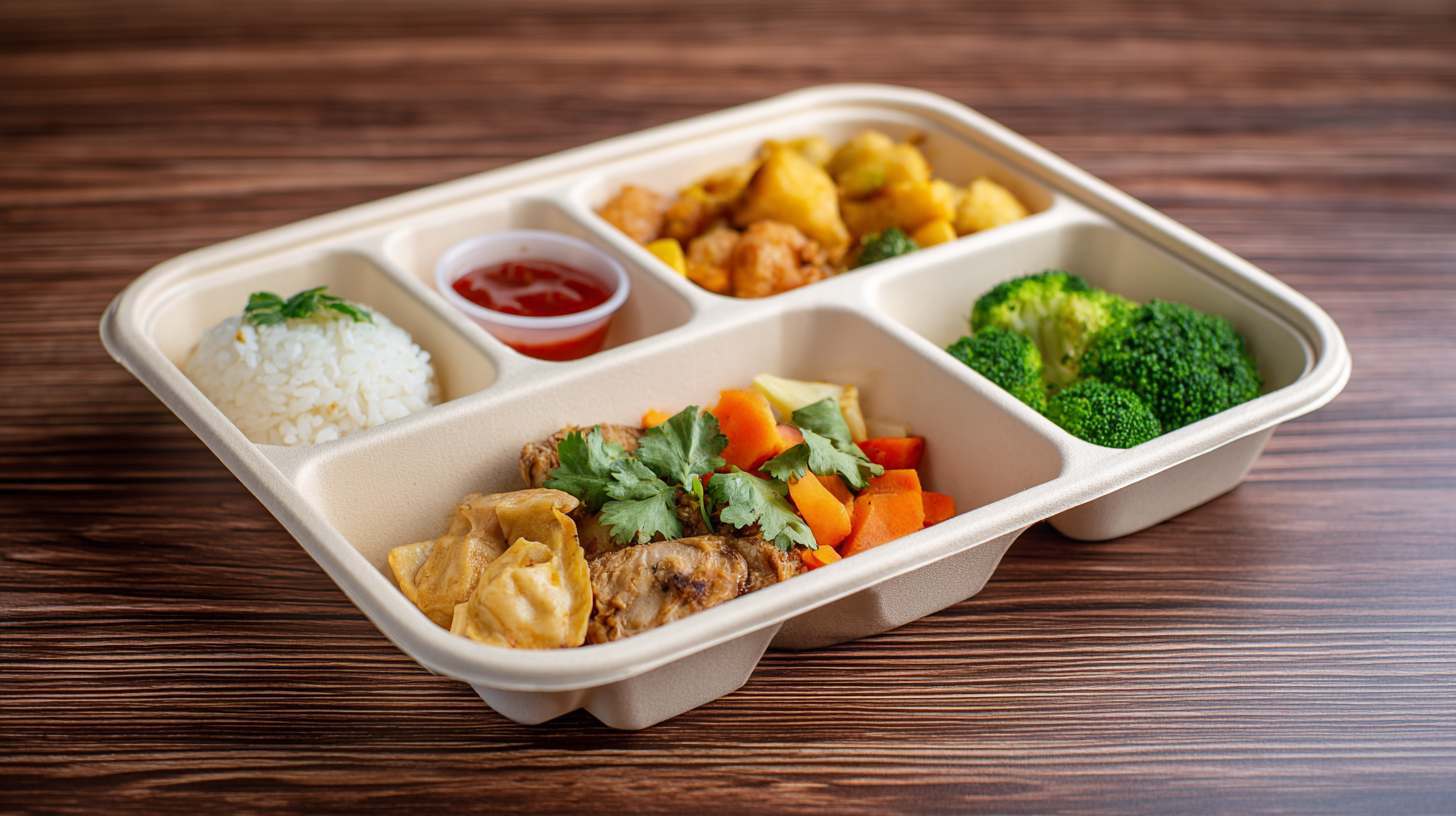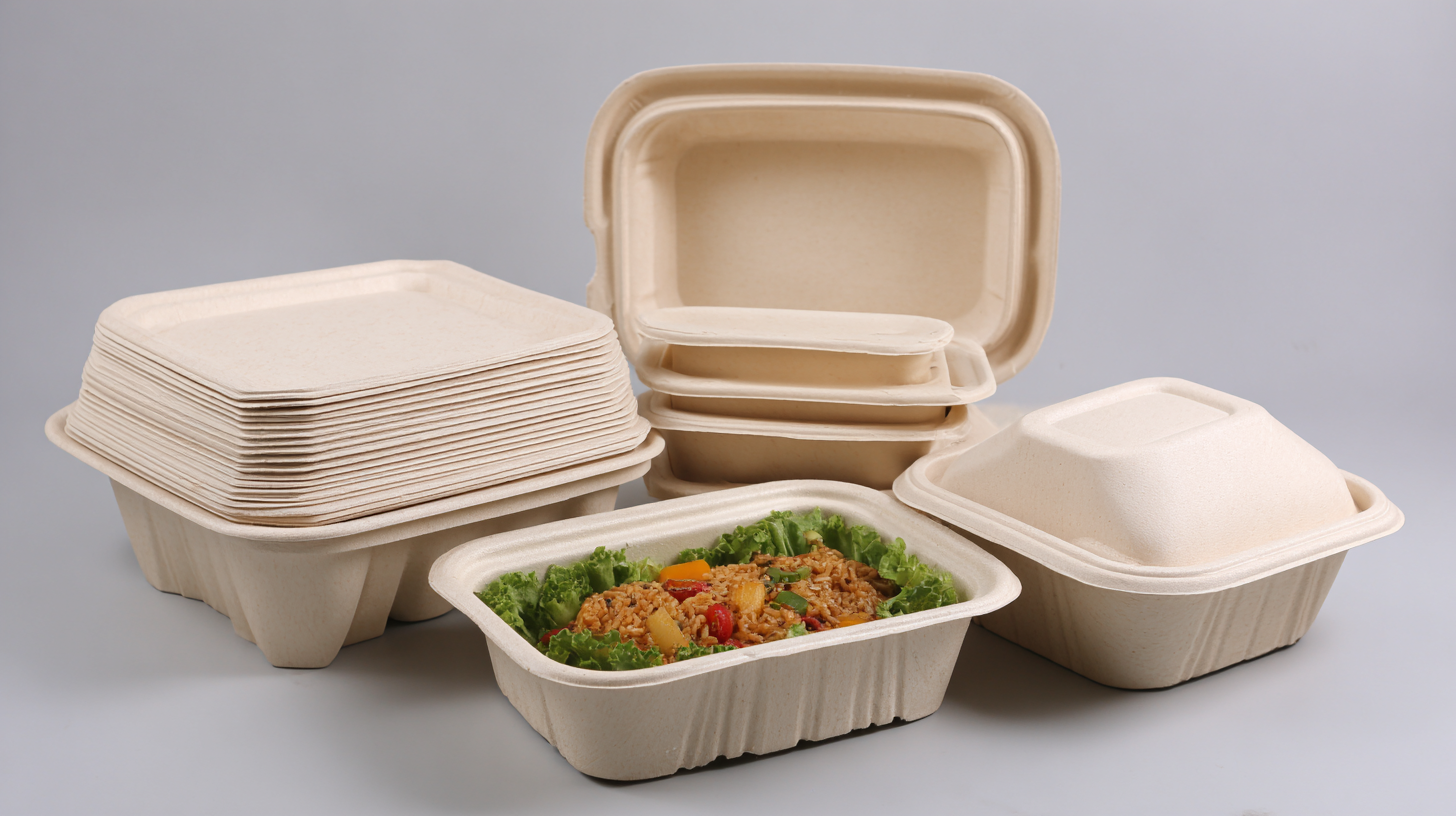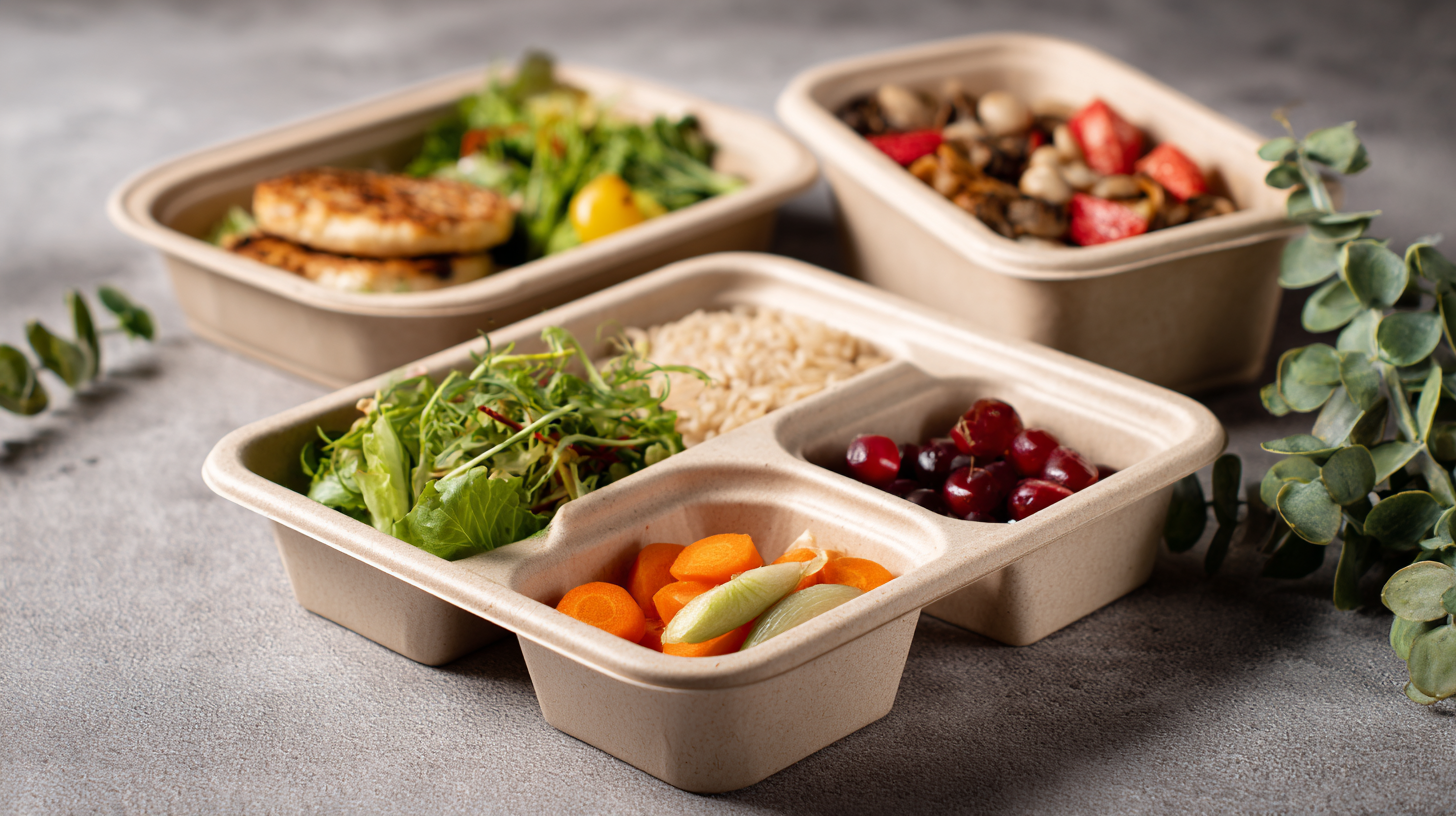As the global shift towards sustainable packaging continues to gain momentum, the Bagasse Lunch Box has emerged as a frontrunner in eco-friendly dining solutions. According to a report by ResearchAndMarkets, the global biodegradable packaging market is projected to reach $415 billion by 2027, indicating a need for alternatives to traditional plastic containers. Bagasse, a byproduct of sugarcane processing, is not only renewable but also compostable, making Bagasse Lunch Boxes an attractive option for environmentally conscious consumers and businesses alike. The increased awareness of plastic pollution and waste management challenges drives the demand for products that are both functional and sustainable. In this ultimate guide, we will explore the various types of Bagasse Lunch Boxes available, helping global buyers make informed choices that align with their commitment to sustainability.

As the demand for eco-friendly packaging solutions grows, bagasse lunch boxes are becoming a popular alternative to traditional materials like plastic and Styrofoam. According to a report by Research and Markets, the global eco-friendly packaging market is expected to reach USD 400 billion by 2027, with sustainable materials like bagasse driving this growth. These boxes, made from the fibrous leftovers of sugarcane processing, not only reduce waste but also offer excellent durability and heat resistance.
One of the key benefits of bagasse lunch boxes is their biodegradability. Unlike plastic, which can take hundreds of years to decompose, bagasse products can break down within 60 to 90 days in a composting environment. This rapid decomposition significantly minimizes landfill contributions. Additionally, bagasse lunch boxes are microwave safe and can withstand high temperatures, making them perfect for hot meals, which aligns with the needs of a growing base of environmentally-conscious consumers seeking practical solutions. With a rising number of restaurants and catering services adopting bagasse packaging, industry experts predict a substantial shift toward sustainable dining experiences, further enhancing the appeal of this innovative packaging choice.
| Feature | Bagasse Lunch Box | Traditional Lunch Box |
|---|---|---|
| Material | Natural sugarcane fiber | Plastic or Styrofoam |
| Biodegradability | Fully biodegradable within 90 days | Can take hundreds of years to decompose |
| Heat Resistance | Microwave and freezer safe | Limited heat resistance, may melt |
| Cost | Moderate | Lower |
| Durability | Sturdy and robust | Varies by material |
| Environmental Impact | Low, sustainable material | High, contributes to plastic pollution |
When choosing the best bagasse lunch box, buyers should prioritize several key features that ensure both quality and functionality. First and foremost, the material itself is critical; high-quality bagasse is derived from sugarcane, making it biodegradable and environmentally friendly. Look for lunch boxes that boast a thick, sturdy construction, which not only enhances durability but also prevents leakages. Additionally, ensure that the lunch box is microwave and freezer safe, as this versatility will make it much easier to use in various food storage scenarios.
Another essential feature to consider is the design of the lunch box. Opt for boxes that offer multiple compartments to keep different food items separated, which can help maintain freshness and prevent mixing of flavors. A secure lid with a reliable locking mechanism is also necessary to avoid spills during transportation. Lastly, buyers should evaluate the size and capacity of the lunch box based on individual needs, whether for personal use, family meals, or catering purposes. By focusing on these key features, global buyers can confidently select the best bagasse lunch boxes that meet their specific requirements.
When it comes to choosing the best bagasse lunch box, understanding the different types available is essential. Bagasse, the fibrous residue left after extracting juice from sugarcane, is an eco-friendly material that not only biodegrades well but also offers a sturdy solution for packaging. For everyday use, the classic rectangular or square bagasse lunch boxes are ideal as they offer ample space for various food items and are designed to keep moisture at bay.

For those with specific dietary needs or preferences, there are compartmentalized bagasse lunch boxes that separate different food items, preventing unwanted mixing and contamination. This is particularly beneficial for meal prepping or for packed lunches that require portion control. Additionally, for on-the-go buyers, lightweight and stackable designs are available, making them easier to carry without compromising on durability.
Tips: When selecting a bagasse lunch box, consider the size that best meets your needs—whether for a child's lunch or a meal for yourself. Also, check for sustainable sourcing certifications to ensure you're making an environmentally conscious choice. Finally, look for leak-proof seals if you're packing items like soups or sauces to keep your bag clean and mess-free.
When looking for the best bagasse lunch boxes, it’s crucial to consider brands that prioritize eco-friendliness and quality. Some of the top brands in this market include Eco-Products and StalkMarket, both of which are known for their sustainable practices and durable designs. Eco-Products offers a range of compostable lunch boxes made from 100% bagasse, which is a byproduct of sugarcane processing. Their containers are sturdy, microwave-safe, and perfect for hot meals, making them a favorite among eco-conscious consumers.
Another notable contender is StalkMarket, which prides itself on fully biodegradable food packaging. Their lunch boxes not only meet ecological standards but also emphasize style and functionality. With options customizable to different sizes and shapes, these containers cater to diverse meal prepping needs. Additionally, StalkMarket’s commitment to zero waste and their use of renewable resources attract environmentally-conscious buyers who want to make a positive impact while enjoying their meals.
Bagasse lunch boxes are gaining popularity in the sustainable packaging landscape, and for good reason. Derived from sugarcane pulp, bagasse is a renewable resource that offers a biodegradable alternative to traditional plastic containers. By choosing bagasse, consumers can significantly lessen their environmental footprint, as these lunch boxes break down naturally in composting conditions, reducing the amount of waste that ends up in landfills. Furthermore, the production of bagasse lunch boxes requires less energy than plastic manufacturing, making them a champion of eco-friendliness.

In addition to their environmental benefits, bagasse lunch boxes are versatile and resilient. They can withstand temperatures ranging from frozen to heated, making them suitable for a variety of food items, from salads to hot entrees. Many brands also ensure that these boxes are unbleached and free from harmful chemicals, offering a safe option for food packaging.
As global awareness about sustainability increases, consumers are more inclined to make choices that not only serve their needs but also support the planet. By opting for bagasse lunch boxes, buyers actively contribute to environmental conservation while enjoying practical and reliable food storage solutions.
